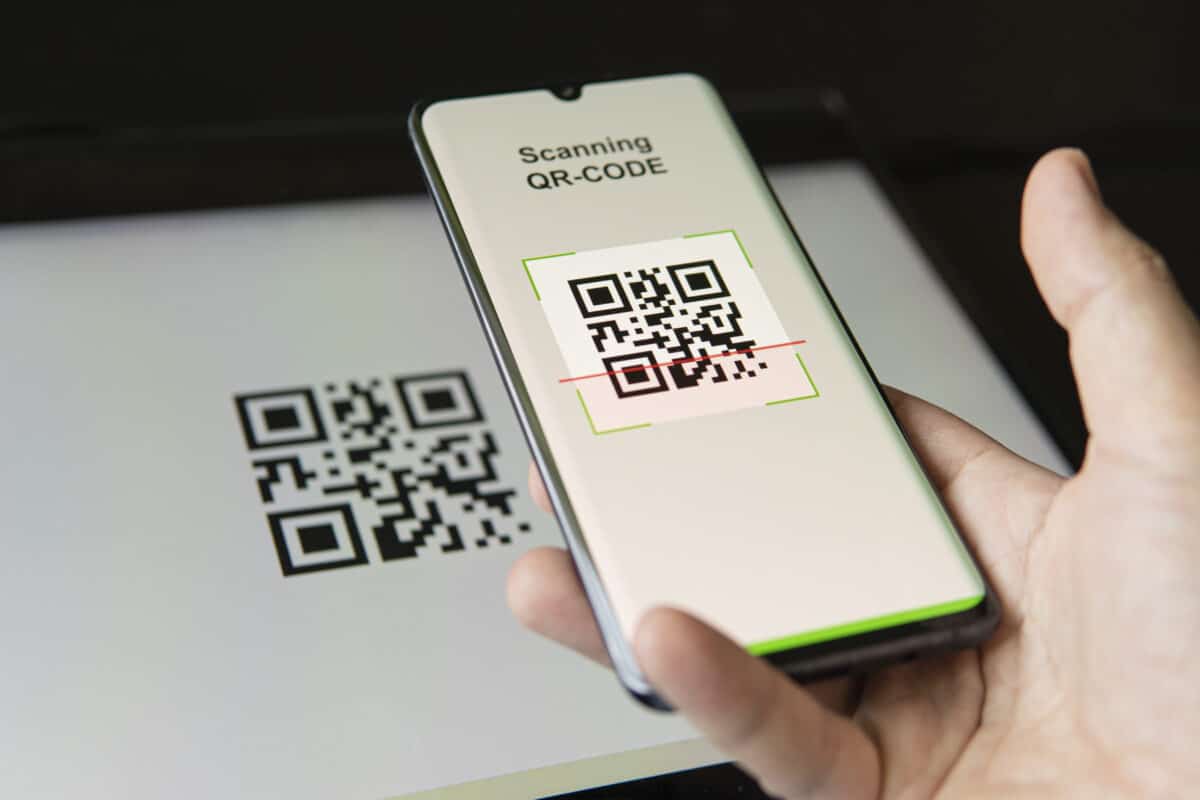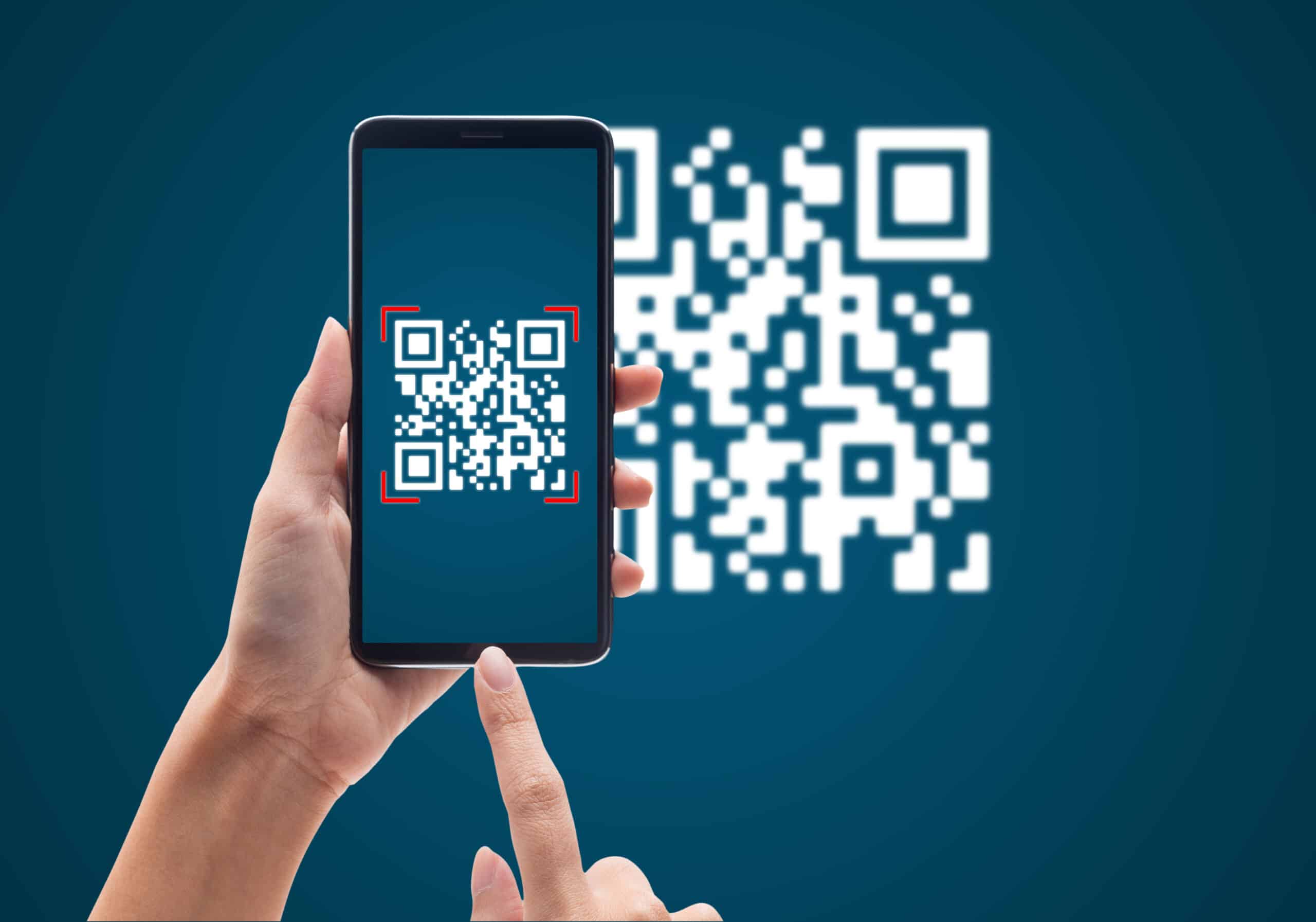Imagine entering a trendy bar in the Mission District of San Francisco. The doorman provides options: you can order food and beverages at the bar, or you can use a QR code. Once inside, you observe that each table in the pub has a card bearing a pixelated black-and-white square representing the code.
Then, you use your phone’s camera to scan the code, access the online menu, and enter your credit card information to place your order. You do it all without touching a printed menu or interacting with a server.
Well, stop imagining — and get ready to experience the new world of QR codes!
What would have been considered outlandish a decade ago is now a reality, as QR codes have come a long way through all these years. They have worked wonders to make transactions as touchless as possible, and they have become a permanent tech fixture, especially after the COVID pandemic.
Restaurants have embraced them, stores have put them on their checkout registers, and marketers have plastered them on direct mail, billboards, and TV commercials.
As a result, QR codes are now so pervasive that it is rare to not come across one in your daily life. In fact, the codes have just begun to appear on tombstones as part of a service that offers info about the deceased.
So, yes, you cannot ignore the QR wave everywhere in the world, but you may be wondering: how did it all start in the first place?
There is a reason QR codes exist; their creators had certain needs and intentions. Further, they reflect the norms and challenges of their era.
Come and sift through the mountains of QR code background with us as we reveal the narrative of how this beautiful code was born.
What Are QR Codes?

Scanning QR codes with an iPhone is a simple and easy process.
A quick response code, or QR code, is a form of matrix barcode developed in 1994 by the Japanese car parts manufacturer, Denso Wave. In order to decipher a QR Code, you have to use a laser scanner or a smartphone camera, both of which typically run specialized software.
The finder pattern can be found in any of the three corners of a QR Code. It is in the form of black and white squares that an optical scanner can read to reveal the code’s orientation.
You can also find a couple of other patterns as well. The alignment pattern, for instance, consists of squares within squares and is used to identify distorted QR codes.
The other noticeable pattern is the timing pattern, which consists of alternating black and white squares that connect with the larger squares. It mainly functions as the QR code’s coordinate system.
According to the QR code standard, the greatest allowable code size is Version 40, which is a matrix of 177×177 pixels, and the smallest is Version 1, which is a matrix of 21×21 pixels. Therefore, it is possible to fit 7,089 digits or 4,296 letters and spaces into a QR Code Version 40.
The Road Leading to the Birth of QR Codes
The supermarket’s emergence to satisfy the suburban hordes’ needs prompted a novel logistical issue in the United States. How can such a large number of unique objects be efficiently processed all at once?
As American displeasure with waiting in line increased throughout the 1950s and 1960s, IBM began revising the patented technology. It collaborated with the supermarket business to create the current vertically aligned UPC barcode. Because of this, checkout lines moved 40% faster by the late 1970s.
During the ’80s, tens of thousands of supermarkets and department stores began using the system. As of the turn of the millennium, the barcode market was worth about $17 billion. But, ultimately, the lack of storage space made the world feel the need for something that could hold more information.
Shortcomings of the Traditional UPC Code
Originally promoted by IBM, the barcode could hold a 12-digit number. But, in 1974, code 39 barcodes became available, which could contain 30 different alphabetic and numeric characters. It really helped because each could hold a growing amount of information. However, none of them can hold more than about 100 characters.
Another issue was keeping up with the growth in technology. As technology advanced, so did the rate of production. Parts and pieces rushed down conveyor lines and through factories at accelerating speed. The UPC barcode couldn’t handle the load. It was adequate for grocery store checkouts in the 1970s but became a serious manufacturing bottleneck in the 1990s. This led to the development of QR codes.
How Were QR Codes Invented?
The 1960s saw Japan’s rapid economic expansion, and with it came the proliferation of neighborhood stores stocking everything from fresh produce to secondhand apparel.
The price had to be manually entered into the cash register for purchases made at these stores. Many cashiers developed carpal tunnel syndrome and other wrist problems as a result. Cashiers wished there was a way to make their jobs easier, and the development of barcodes offered a viable answer to this issue.
After that, it did not take long to create the POS system. It enabled the cash register to instantly update the item’s pricing upon scanning its barcode with an optical sensor and transmitting the relevant data to a central computer. It was a blessing!
But as barcodes became more prevalent, their shortcomings became more evident, too. The fact that a barcode can only store around 20 alphabetic characters stood out as the most significant. As a result, those in need of barcode readers reached out to DENSO WAVE, Inc. to inquire as to whether or not it was possible to create barcodes with a greater capacity for data storage.
As a result of these positive user reactions, DENSO WAVE’s development team decided to create a new two-dimensional code to better meet the needs of its customers. This paved the way for modern-day QR codes to show their pretty little “dotted” faces to the world in 1994.

The History of QR Codes
Hara Masahiro, a Denso engineer, created the QR code almost three decades ago. Eventually, his department became its own separate company, Denso Wave, where he is now the head engineer.
Hara’s team was tasked with developing a barcode to facilitate tracking vehicles and vehicle components throughout the production process. And they responded with a QR code to resolve all those issues. But, interestingly, no one thought it would have any applications outside of the auto sector.
The Expansion of the QR Code
Yet another important aspect of the QR code’s rapid adoption was DENSO WAVE’s choice to make the code’s specs public so that anybody could use it without charge.
DENSO WAVE stated that it would not use the patent on the QR code even though it would retain ownership of the technology. Their original intention behind the invention of the QR code was always to make it accessible to the general public. As a result, the QR code, which could be used without expense or concern for potential complications, rapidly expanded into a “public code” utilized by people all over the world.
The year 2002 marked the year of the code’s adoption by the Japanese population at large. The widespread availability of smartphones equipped to scan QR codes became a driving force behind this movement. Thanks to these devices, all users had to do to visit a website or redeem a voucher was scan a peculiar yet visually appealing pattern, known as a QR code.
In 2012, the QR code won the Good Design Award, developed in Japan to broadly promote industrial design. However, it was 18 years after the invention of the QR Code, when apart from its obvious use, the officials recognized and rewarded the creation of techniques for spreading the code’s use and ways the code could be utilized.
Reasons Why QR Codes Became So Popular Back Then
Those traditional barcodes were one-dimensional and had to rely on the positioning of vertical lines to encode info horizontally. It had its limitations, which is why people welcomed QR codes, which were two-dimensional and capable of holding more details.
They encode information in both vertical and horizontal directions. This indicates that QR codes can hold more information than UPC barcodes of the same size. Currently, QR codes may hold up to 7,000 characters. This makes them useful for applications where space is limited, such as food QR codes.
Similarly, faster scanning was another obvious benefit that made QR codes more popular. In fact, the major reason Hara and Denso Wave created the QR code was to facilitate rapid scanning. The automated vehicle industry required it. The name of the technology itself, Quick Response coding, reveals this focus.
It worked back then, and it works now, mainly because it speeds up scanning in different ways. For instance:
- It enabled optical scanners to access more data at any given time. This was due to the fact that the optical scanner accesses encoded information in both directions.
- The code itself was scannable from a wider variety of angles and distances. This was especially helpful for machine parts, which sometimes had odd or awkward shapes and moved quickly down an assembly line.
But, it did not stop at this because the fact that a QR code can hold a lot of information encouraged other uses as well.
Anywhere from a few dozen letters to more than 4,200 alphanumeric characters can now be encoded into the patterns, making them useful for storing everything from simple info like URLs to massive amounts of data. Then, all you have to do is scan the QR code to have access to the content.
The Future of QR Codes
Since the pandemic began, Bitly reports that there has been a 750% increase in QR code downloads. The global epidemic has indeed accelerated the spread of QR codes, but other forces are also at play.
To begin, there has been a dramatic rise in internet usage over the past decade. Second, the default camera apps now come with QR Code reading capabilities. This eliminates the requirement for users to download additional software in order to read QR codes.
Today, it is possible to find QR Codes in a wide variety of settings and sectors. Among these are manufacturing, information technology, real estate, textile, and many more sectors. Many of them are excited to use the QR code technology to expand their operations and advertising.
The food and beverage industry is one of the major users of QR codes due to their versatility. In healthcare, QR codes serve a wide variety of purposes, like preventing drug counterfeiting, making patients’ history accessible, and simplifying the process of authenticating vaccine certificates.
What’s more, interactivity is the key to user engagement in the modern era. And now, you can give your audience engaging, interactive content by using a QR code to link offline materials to digital resources.
Final Thoughts
As more people become aware of QR codes and their usefulness, their widespread adoption is expected to skyrocket. It is only a matter of time before businesses begin adopting this technology to run their operations efficiently and effectively.
The image featured at the top of this post is ©iStock.com/Thatphichai Yodsri.

